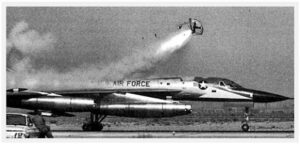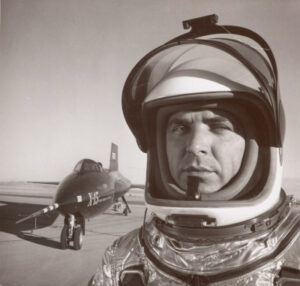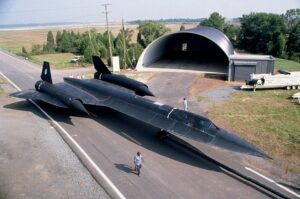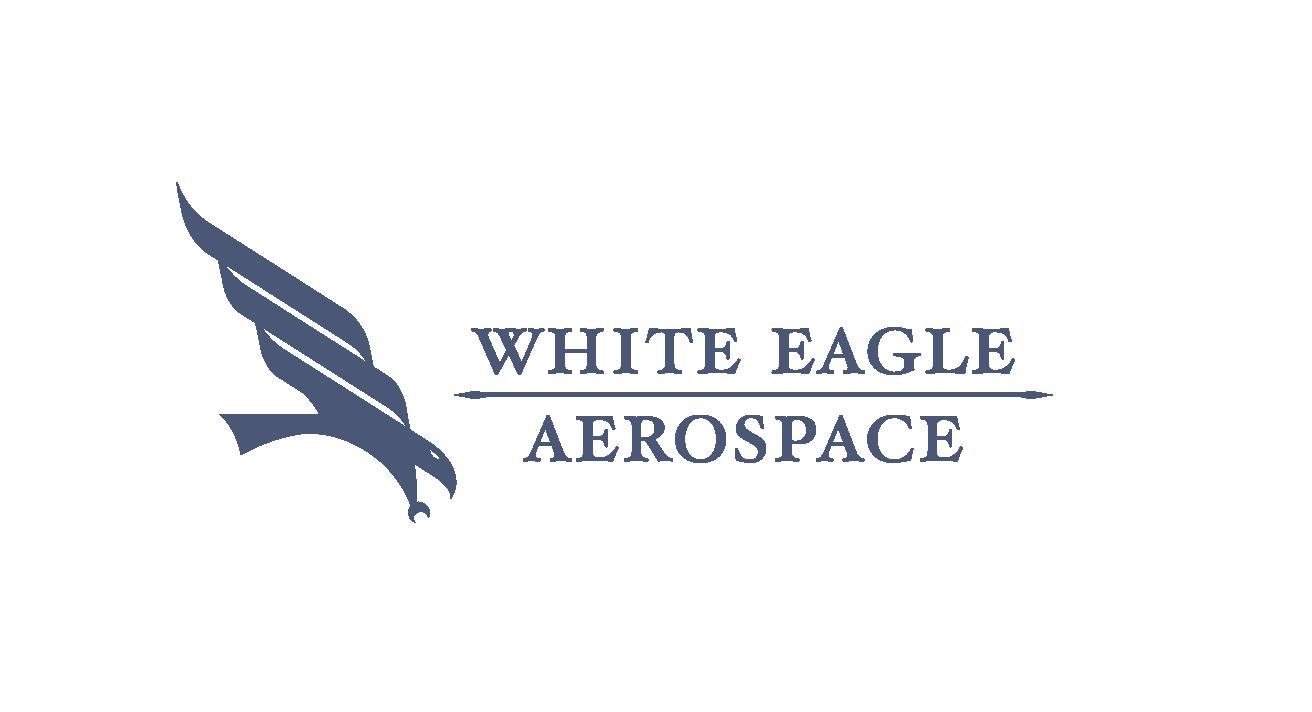🚢 USS Carl Vinson & F-35C Lightning II: Projecting Naval

Power in the Red Sea
As global tensions simmer in key maritime corridors, the United States Navy is reinforcing its presence in one of the world’s most strategically vital waterways: the Red Sea. Leading this mission is the USS Carl Vinson (CVN-70), accompanied by the cutting-edge F-35C Lightning II—America’s most advanced carrier-based stealth fighter.
This deployment highlights the seamless integration of air and sea power, projecting strength, ensuring maritime security, and maintaining stability in a region crucial to global trade and geopolitical interests.
✈️ The F-35C Lightning II: The Navy’s 5th-Generation Force Multiplier
As the carrier variant of the Joint Strike Fighter program, the F-35C is engineered specifically for maritime operations. It features:
-
🔹 Foldable wings for carrier deck operations
-
🔹 Larger wingspan and landing gear designed for catapult launches and arrested landings
-
🔹 Increased fuel capacity and range for deep-penetration strike missions
-
🔹 Stealth capabilities and advanced sensor fusion for unmatched situational awareness
The F-35C is not just a fighter—it’s a data node, sharing real-time information with surface ships, other aircraft, and ground forces, creating a unified combat picture across domains.
⚓ USS Carl Vinson (CVN-70): A Floating Fortress
The USS Carl Vinson, a Nimitz-class nuclear-powered aircraft carrier, is a formidable presence in any theater. With over 60 aircraft onboard, including F/A-18 Super Hornets, E-2D Hawkeyes, and now the F-35C, it represents a multi-mission power projection platform.
Key capabilities include:
-
🛡️ Integrated air defense and strike operations
-
⚙️ Rapid deployment of carrier strike group assets
-
🌐 Forward presence to support allies and deter adversaries
-
🔋 Nuclear propulsion for sustained, high-endurance missions
In an era of contested domains, the Carl Vinson remains a symbol of U.S. naval dominance and readiness.
🌍 Securing the Red Sea: Why It Matters
The Red Sea is more than a waterway—it’s a global artery. Nearly 10% of global trade transits through this region via the Bab el-Mandeb Strait, connecting the Mediterranean to the Indian Ocean. Instability in this region threatens the free flow of commerce and access to critical energy supplies.
By deploying advanced naval assets like the Carl Vinson and the F-35C, the U.S. Navy:
-
✅ Strengthens maritime domain awareness
-
✅ Deters hostile threats and non-state actors
-
✅ Supports freedom of navigation operations
-
✅ Reinforces regional partnerships and interoperability
🔍 A Glimpse Into the Future of Naval Aviation
This mission represents more than just presence—it reflects a shift in how 21st-century naval warfare is being conducted. Platforms like the F-35C bring stealth, connectivity, and precision into environments that demand both technological superiority and tactical agility.
With adversaries developing anti-access/area-denial (A2/AD) strategies, the synergy between next-gen aircraft and modern carriers ensures that U.S. forces retain air superiority and operational reach wherever they’re needed most.
🧭Strategy Meets Technology
The deployment of the USS Carl Vinson and its air wing—now enhanced by the F-35C Lightning II—demonstrates how the U.S. Navy is evolving to meet modern threats with unmatched capabilities and forward-thinking strategy.
This operation is a powerful reminder that the intersection of engineering excellence, operational readiness, and geopolitical awareness is where aerospace and naval innovation truly shine.
📢 Join the Conversation
What do you think about the evolving role of naval aviation in global security? Share your thoughts in the comments below.
🚀 A Bear, a Supersonic Jet, and a Historic Ejection: The
Untold Story of Yogi and the B-58 Hustler
On March 21, 1962, the U.S. Air Force conducted one of the most unusual—and groundbreaking—tests in aerospace safety history. At the center of this mission? Not a pilot, not a mannequin… but a black bear named Yogi.
This remarkable event was part of a critical effort to validate the safety of ejection systems at supersonic speeds, specifically for the Convair B-58 Hustler, the Air Force’s first operational supersonic bomber.
✈️ The Mission

-
Aircraft: Convair B-58 Hustler
-
Speed: Approximately Mach 1.3 (870 mph)
-
Altitude: 35,000 feet
-
Objective: Test the survivability and performance of a supersonic escape capsule
The B-58, with its sleek delta-wing design and capability to exceed Mach 2, posed unique challenges for pilot safety. Traditional ejection seats were insufficient at such high speeds and altitudes. To address this, engineers developed a fully enclosed ejection capsule—a major leap forward in aircrew protection.
🐻 Why Use a Bear?
To conduct a realistic and biologically relevant test, the Air Force needed a subject that closely matched the size, weight, and physiological response of a human pilot. A black bear—nicknamed Yogi—was selected due to its mass and tolerance for high-stress environments.
Yogi was securely placed in the escape capsule and flown aboard the B-58 to test conditions. At altitude, the capsule was ejected at supersonic speed, initiating a sequence of shock-absorbing, parachute-deploying, and landing systems.
🌟 The Outcome
The test was a resounding success. Yogi survived the supersonic ejection, and the capsule’s systems performed as designed, validating the technology. This momentous event proved that ejection from a high-speed aircraft could be safe and survivable, paving the way for future innovations.
🛡️ Lasting Impact on Aerospace Safety
Yogi’s historic ride contributed to several major advances in pilot survivability:
-
✅ Validated ejection capsule design for high-speed bombers
-
✅ Improved shock absorption technology
-
✅ Laid the groundwork for zero-zero ejection seats—capable of safely ejecting at zero altitude and zero airspeed
Though unconventional, this test was a critical moment in aerospace safety development. It also highlights the extraordinary lengths engineers have gone to in order to protect lives in extreme flight conditions.
👨✈️ A Legacy of Innovation
Today, advanced ejection systems—some direct descendants of that 1962 test—continue to save pilots’ lives across the globe. The story of Yogi the bear may sound like aviation folklore, but it remains a testament to creative problem-solving, engineering courage, and the pursuit of safer skies.
🚀 The Silent Symphony of Space: Why the Universe Has No Sound

When we picture space, we often imagine powerful rocket launches, supernovae explosions, and fiery cosmic collisions. These events are full of energy and motion, so you might expect space to be filled with sound. But here’s the surprising truth:
Space is completely silent.
Unlike Earth, where sound travels through air and water, space is a vacuum. There are no molecules to carry sound waves, which means even the loudest cosmic events occur in complete silence. Whether it’s a rocket piercing the atmosphere or a star going supernova, the universe remains eerily quiet.
🧑🚀 How Do Astronauts Communicate?
Despite the silence, astronauts communicate effectively in space using radio waves. Unlike sound, radio waves are electromagnetic and don’t require a medium like air to travel.
These waves allow astronauts to:
- Talk with each other on board the spacecraft
- Maintain contact with mission control on Earth
This technology ensures real-time communication, even hundreds of miles above Earth.
🚀 What Happens to Sound During Rocket Launches?
On Earth, rocket launches are deafening. We hear the thunderous roar of engines as they ignite and lift off.
But as rockets ascend and enter the vacuum of space:
- The atmosphere thins
- Sound waves lose their medium
- The roar fades to complete silence
The drama remains visual—but not audible.
🌌 Is Space Truly Silent?
While we can’t hear in space the way we do on Earth, the universe isn’t entirely without “sound.”
Scientists use instruments to detect:
- Vibrations from solar flares
- Ripples from black hole mergers
- Cosmic microwave background radiation
These signals are converted into data—and sometimes even into sound files—giving us a way to “hear” the cosmos in a completely different form.
🎵 The Hidden Music of the Cosmos
From radio astronomy to seismic sensors, modern technology is helping us decode the universe’s quiet symphony.
Though our ears may never hear it firsthand, space sings in waves, frequencies, and signals that continue to fascinate scientists and engineers.
Space may be silent, but it is never still.
🚀 On This Day in Aerospace History: Breaking Mach 4 with the X-15
📅 March 7th, 1961
U.S. Air Force Major Robert M. White made history by becoming the first pilot to exceed Mach 4, flying the legendary North American X-15 rocket plane to an astounding Mach 4.43 (2,905 mph).
✈️ What Made This Flight Historic?
This was more than just a milestone in speed—it was a pivotal moment that:
✅ Pushed the boundaries of human flight performance
✅ Opened the door to space exploration
✅ Informed the development of future supersonic and hypersonic aircraft
White’s flight proved that sustained, controlled flight at extreme speeds was possible, laying the groundwork for everything from modern jet aircraft to orbital space missions.
🔍 The X-15 Rocket Plane
The X-15 program was a collaboration between NASA, the U.S. Air Force, and North American Aviation. Designed to explore the upper limits of flight, the X-15:
- Reached speeds over Mach 6.7
- Flew to altitudes of over 50 miles
- Collected vital data used in the design of spacecraft and future high-speed aircraft
It became one of the most important research aircraft in aerospace history, with pilots like Robert White paving the way for the Mercury, Gemini, and Apollo programs.
🌌 Legacy of Mach 4
Breaking Mach 4 was a bold leap forward in 1961—and it still inspires engineers and pilots today. The lessons learned from the X-15 live on in everything from the Space Shuttle to modern hypersonic vehicles.
Would you dare to fly at Mach 4?
Let us know your thoughts in the comments—then keep exploring the frontiers of flight.
How Fast Would the SR-71 Blackbird Reach the Moon?
The SR-71 Blackbird, one of the fastest jets ever built, could reach speeds of Mach 3.3 (around 2,200 mph). But what if it could fly
 straight to the Moon?
straight to the Moon?
The Numbers Behind the Journey
- Distance from Earth to Moon: ~238,900 miles
- Speed of the SR-71: ~2,200 mph
If an SR-71 could sustain top speed all the way to the Moon (ignoring fuel limitations, air resistance, and lack of atmosphere):
238,900 miles ÷ 2,200 mph = ~109 hours (~4.5 days)
Of course, the SR-71 wasn’t built for space travel, and real spacecraft like the Apollo missions reached the Moon in about three days with speeds over 24,000 mph. Still, the SR-71’s speed remains legendary in aviation history!
Blog post 4
How Do Fighter Jets Refuel Mid-Air Without Stopping?
Military jets like the F-22 Raptor and B-2 Spirit can refuel in mid-air, allowing them to extend their missions without landing. But how does this complex maneuver work at speeds over 300 mph?
Two Methods of Aerial Refueling
- Boom Refueling (Used by U.S. Air Force Jets)
- A tanker aircraft (like the KC-135) extends a rigid boom, which an operator manually guides into the receiving jet’s refueling port.
- Fuel is pumped quickly, allowing the receiving aircraft to refuel in just a few minutes.
- Probe-and-Drogue Refueling (Used by Navy and NATO Jets)
- A flexible hose with a basket-like “drogue” extends from the tanker.
- The receiving jet maneuvers a refueling probe into the drogue to connect and take in fuel.
- This system allows multiple jets to refuel at once but is slower than boom refueling.
Challenges of Aerial Refueling
- Pilots must hold perfect formation while connecting to the tanker.
- Any sudden movement can cause the refueling system to disengage or even damage the aircraft.
- In combat zones, refueling aircraft operate in designated safe zones, protected by fighter escorts.
Aerial refueling is a game-changer in modern air combat, enabling fighter jets to stay airborne for hours without landing!
Blog post 5
What Would Happen If a Plane Flew Too High?
Commercial jets like the Boeing 787 typically cruise at 35,000–40,000 feet, but what if a plane tried to fly much higher?
The Limits of Altitude
Planes rely on air density for both engine performance and lift generation:
- Engines Need Oxygen: Jet engines require oxygen for combustion. At very high altitudes, the air is too thin to support efficient fuel burning.
- Wings Need Air Pressure: Lift is generated when air flows over the wings. As altitude increases, air pressure drops, reducing the plane’s ability to stay aloft.
Maximum Operating Altitude
Every aircraft has a service ceiling, the highest altitude at which it can maintain level flight.
- Boeing 747: ~45,000 feet
- F-22 Raptor: ~65,000 feet
- U-2 Spy Plane: ~70,000+ feet
- SR-71 Blackbird: 85,000 feet (pushing the limits of air-breathing flight)
Beyond this, an aircraft would reach its “coffin corner”—a dangerous altitude where the stall speed and maximum speed converge, making the plane extremely difficult to control.
For space travel, rockets like SpaceX’s Starship are designed to operate entirely in the vacuum of space, where aerodynamic lift is no longer needed!






